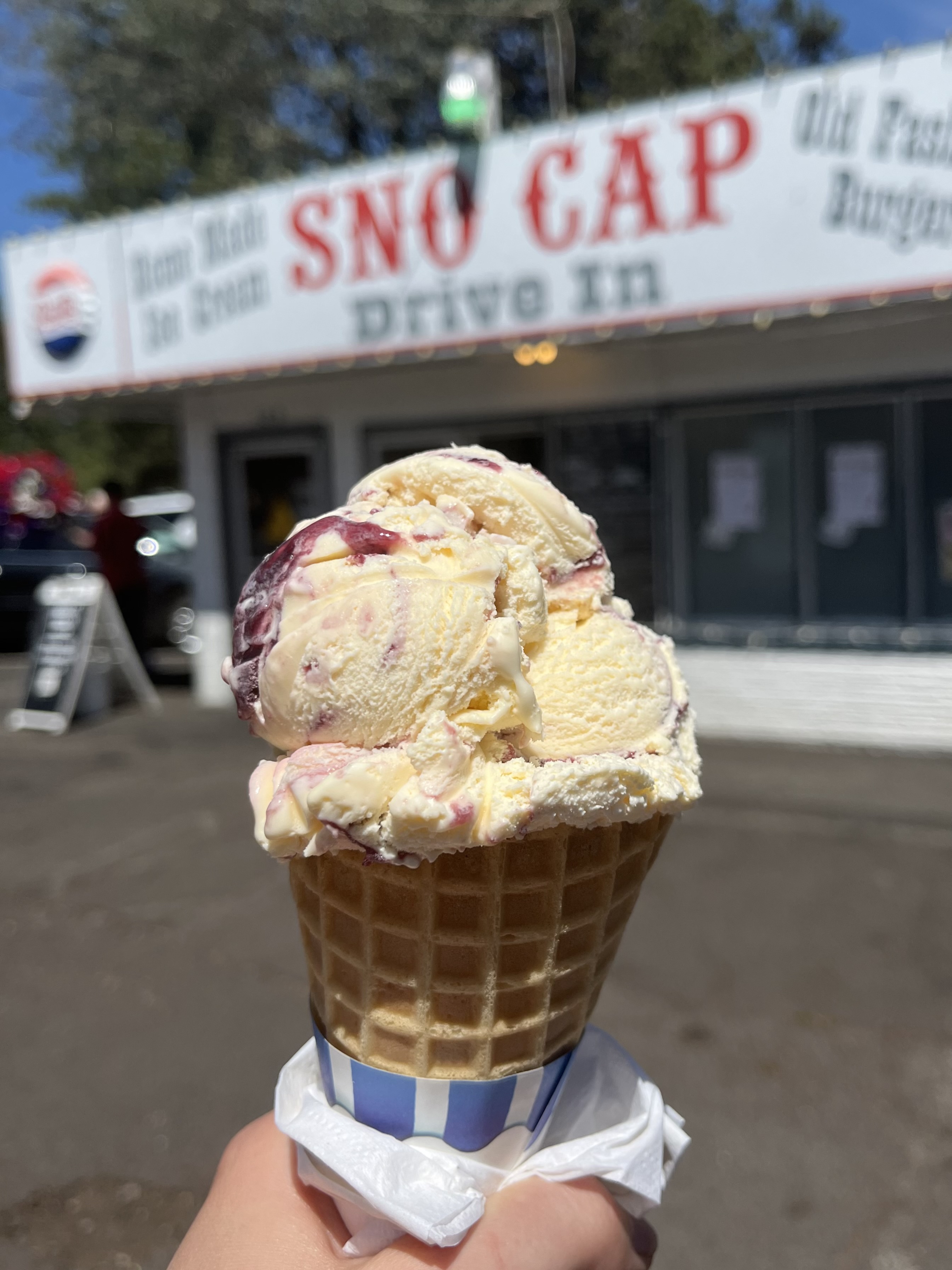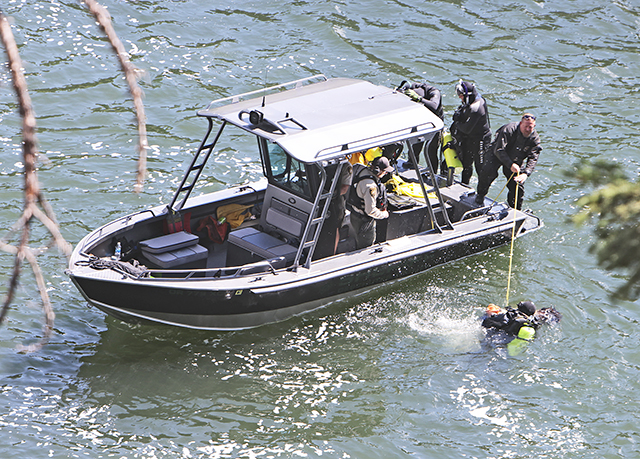Skiing Anthony Lakes
Published 4:00 am Sunday, January 10, 2010

- A skiing symbol indicates to drivers on the Anthony Lakes Highway that they are going in the direction of the ski resort. Anthony Lakes Mountain Resort is 35 miles northwest of Baker City.
BAKER CITY —
I felt as if I had crossed over into the Twilight Zone.
Trending
Although Oregon’s Journey Through Time Scenic Byway ends at Baker City, it could easily be extended to the nearby Anthony Lakes Mountain Resort.
Time seems to stand still at this tidy little ski area in the Elkhorn Range of the Blue Mountains. It reminds me of nothing so much as Mt. Bachelor ski area in the early 1960s.
When I was a child — if memory serves me correctly — an all-day lift ticket at Mt. Bachelor cost just $6. That entitled me to seven hours on a T-bar, a poma (cable-driven platter lift) and a brand-new chairlift, the mountain’s first.
Anthony Lakes got started about that same time, installing a poma in 1961 and replacing it with a chairlift in 1967. But even now, in its 50th year of operation, Anthony still has only one chair, albeit a new triple. Today’s lift tickets cost a lot more than $6 (they’re priced $39 for all day, Friday through Sunday), but they are far less than modern Mt. Bachelor. And on Thursdays, Anthony’s tickets are still just $16.
Road to Anthony Lakes
The vertical drop at Anthony Lakes is only 900 feet, its accessible terrain only 1,100 acres. But the base elevation of 7,100 feet is the highest in Oregon, and this almost assures light, dry, powder snow. That was the case when I visited during the Christmas holidays.
Trending
My traveling companion and I had stayed overnight in Baker City, a five-hour drive east from Bend. Like the ski area, the northeastern Oregon town of just over 10,000 people hasn’t changed a whole lot over the years. Our friends Stephen White and Kina Allen-White, former Bend residents who now own a Baker City pizzeria and a couple of rental properties, lodged us in a condominium unit in the St. Elizabeth Towers, a converted early-20th-century hospital.
Although we didn’t require any first aid, the historic property helped to set the mood for the next couple of days.
There are two ways to cover the 35 miles to Anthony Lakes from Baker City. Interstate 84, via the little town of North Powder, may be slightly faster, but I find this route far less entertaining than the alternative. We opted for U.S. Highway 30, weaving through ranchland to the village of Haines, which has a well-known steakhouse and a seasonal museum that traces the history of the local mining and logging industries.
From here, the Anthony Lakes Highway weaves along the foot of the Elkhorn Range, past ancient barns and dormant trees where red-tailed hawks roost to scan the snowy prairies for cottontail rabbits and other prey. Then the road joins the North Powder route and climbs through rich coniferous forest to the resort.
“Highway” is a misnomer for this simple, two-lane, paved (but well-maintained) road, which follows the drainage of the North Powder River west for 18 winding miles to Elkhorn Summit. Here, a sign greets visitors to the Anthony Lakes Mountain Resort.
No lines, great snow
The first thing we saw was Gunsight Mountain. The 8,342-foot peak rises behind the resort, providing a dramatic backdrop to the aging day-lodge facilities. As early as 1933, a rope tow on its flank served adventurous winter-sports lovers at an area known as the Little Alps. Its features included a ski jump, remnants of which are still visible from the cross-country trails. That hill was closed before the U.S. Forest Service granted a 1961 permit for the development of Anthony Lakes.
Although we arrived during the holidays, the parking lot had fewer than 40 vehicles in it. We unloaded our equipment and had the mountain to ourselves. Clouds moved in and out, occasionally obscuring our vision and dropping a few fresh flakes of snow, but occasional sun breaks made it a perfect day. While beginning skiers practiced their turns on a gentle slope served by a rope-handle tow, we skied to the foot of the lone chairlift.
There was no line when we arrived, none at midday, none when we departed. The only breathers we got between runs were on the chair itself. Although the snow wasn’t yet mid-winter deep — the tops of young evergreens broke through the powdery cover on the steep face of Rock Garden, beneath the chair as we ascended — we were up to our knees in fresh powder.
We did warm-up runs on Broadway and Variety, both easy, groomed cruisers. We immersed ourselves in powder on Holiday and Lower College. We took a lunchtime break after diving straight back to the lodge on black-diamond Schuss Alley.
There are difficult runs at Anthony Lakes as well as intermediate: Avalanche, Chicken Out, Starbottle Headwall, Paint Your Wagon. The latter two names recall the filming of “Paint Your Wagon” (starring Clint Eastwood and Lee Marvin) in this vicinity in the late 1960s. Many scenes in the ribald musical took place in the saloon of the fictional Starbottle’s Hotel, built at Anthony Lakes out of wood taken from a 19th-century miner’s cabin.
The prop remained standing for several years thereafter; today, its sign is displayed on a wall of the eponymously named Starbottle Saloon within the main lodge.
Relaxing in the lodge
The Anthony Lakes day lodge has not changed a lot since it first opened in 1967. Steps rise from the parking lot to its upper level, an open cafeteria with a casual grill and large windows facing the ski hill. Beneath, reached through a discreet entrance directly off the mountain, are the ticket window, a small retail shop and resort offices. Ski rentals, a ski-school cabin and ski-patrol headquarters are lodged in nearby buildings.
The most intriguing sections of the lodge are the lower-level warming area and adjoining saloon. Antique ski equipment — broad wooden skis with cable bindings — is mounted on the walls, framed by photographs of the youth racing team and posters signed by winter-sports celebrities. Brands from local cattle ranches are burned into boards that flank a glowing flagstone fireplace, above which is presented the Starbottle’s Hotel sign. Gloves, wool hats and goggles are piled on tables by skiers gone in search of sustenance.
We lunched on a couple of $6 burgers, along with Tumble Off pale ales from Baker City’s own Barley Brown’s Brewery, then headed back out to finish our day of downhill skiing.
My only disappointment was that Anthony Lakes’ backcountry ski tours were not yet operating. Available by reservation for parties of 10 to 12 (at $199 per person), these snow-cat expeditions offer access to 2,000 acres of untracked powder, with a vertical drop (1,700 feet) that almost doubles the lift-served ski area.
At the time of our visit, however, the snow cover was not yet deemed sufficient to access the Elkhorn wilderness. Annual snowfall here averages 300 inches, and at Christmastime, there was only 43 inches at the base, 55 inches at the summit.
Going nordic
Nordic skiing doesn’t require as much snow as alpine, so the season lasts longer. Barely a quarter-mile from the main lodge is Anthony Lakes’ Nordic Center. Longtime director Dick Knowles, another former Bend resident, maintains 37.6 kilometers (23.5 miles) of groomed and track-set trails for classic cross-country aficionados, skate skiers and snowshoers.
Anthony’s 2009-10 nordic season began the second week of November, more than a month before lift operation began. The area offers a variety of trail options for skiers of all abilities, including a 1.9-kilometer (1.2-mile) novice circuit of the main Anthony Lake, which is frozen and snow-covered in winter. A 3.1-kilometer (1.9-mile) intermediate trail leads around tiny Lily Pad Lake, while expert cross-country skiers may circle 4 kilometers (2.5 miles) through Black Lake Meadow, with loop extensions increasing the route to 6.5 kilometers (4.1 miles).
A rustic Nordic Lodge rents and sells equipment, offers lessons and serves locally roasted coffee and baked goods. You can also get sno-park permits ($21 for the season, $4 for the day) here or at the alpine lodge. You’ll need them; state police do give tickets. Access to daily nordic trail use is priced at $13.
Queen City of the Mines
That night, back in Baker City, I learned a little about the history of the area. The Oregon Trail cut directly through the Baker Valley, bringing hundreds of wagon trains in the 1840s and 1850s. Few of these pioneers stayed, as their goal was the lush valleys of western Oregon. But the discovery of gold in the Elkhorn Mountains in the 1860s, coupled with the arrival of the transcontinental railroad, encouraged cities and towns to spring to life.
Baker City became known as the “Queen City of the Mines.” Today, its well-preserved downtown national historic district boasts a wealth of Victorian-era architecture. Among its 110 buildings that date from the era of 1880 to 1910 is the Geiser Grand Hotel, said to have been the finest inn between Seattle and Salt Lake when it was built in 1889.
Closed and nearly torn down in the 1960s, it was restored in the 1990s to the tune of more than $7 million. When it reopened as a 30-room hostelry, it received a special commendation from the National Trust for Historic Preservation. Although we didn’t stay, we visited the plush lounge and made a note to return for a meal on another occasion.
The Baker County Chamber of Commerce and Visitors Bureau offers brochures describing walking tours of the historic district. These tours also point visitors to the Oregon Trail Regional Museum, which features a re-creation of Baker City’s Main Street, circa 1900, and a rock and gem collection valued at more than $1 million.
We concluded our trip with a morning visit to the National Historic Oregon Trail Interpretive Center on Flagstaff Hill, eight miles east of Baker City on state Highway 86. We strolled past life-size dioramas of life on the trail, including multimedia presentations and a replica wagon encampment. Had the weather been warmer, we might have walked some of the interpretive trails that crisscross a section of original Oregon Trail wagon ruts.
Across the valley, not 20 miles to the west, the Elkhorn Range rose majestically above the snow-spotted ranchlands. I could almost pick out Gunsight Mountain, overlooking the Anthony Lakes. And I couldn’t help but think, as I stood in the 1840s and gazed toward the 1960s, that I was still undertaking my “Journey Through Time.”
But if I were to be stuck in the Twilight Zone, there are a lot worse places than a powder-rich mountain with cheap tickets and no lift lines.








